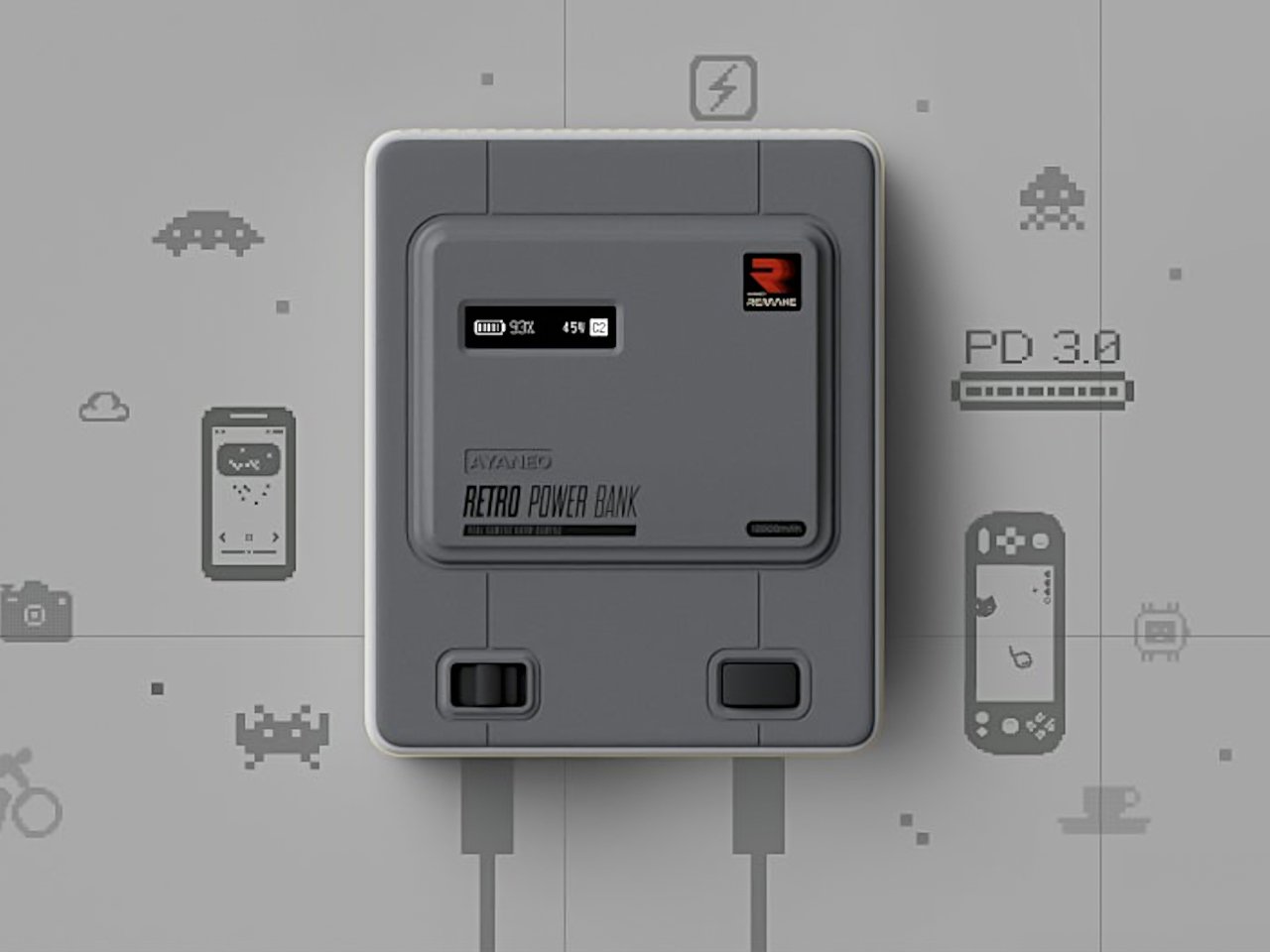Technology’s relentless evolution transforms how we live, blurring the line between novelty and necessity. I discovered this during a cross-country flight when my laptop died mid-presentation, leaving me frantically searching for an outlet. Power banks epitomize this shift, emerging as elegant solutions to digital disconnection anxiety. These portable energy sanctuaries preserve our digital lifelines when battery icons flash red warnings. For design-conscious users like myself, today’s power banks are no longer a blocky design but rather marry utility and aesthetics as sleek objects that slide into pockets alongside our cherished devices, providing the psychological comfort of knowing we’ll never be stranded with a dead device.
The liberation offered by portable power reshapes our relationship with technology and space. I’ve appreciated this freedom during weekend hikes capturing sunset photos without battery anxiety, and at design conferences documenting inspirations among more scenarios. While wall chargers anchor us to architectural grids, power banks celebrate nomadic freedom. As devices become extensions of ourselves, these portable power sources have evolved into design objects worthy of display, silent guardians that speak volumes about our appreciation for both form and function.
How Have Power Banks Evolved?
As technology advances, power banks have undergone significant transformation. The power banks were once bulky and heavy devices that have now become sleek and lightweight units that store electrical energy to power electronic devices. Some of the recent improvements in lithium-ion battery technology have increased energy density allowing more power to be stored in a smaller space. These advancements not only make power banks more compact but also improve safety and enable faster charging speeds. Additionally, integrated circuits (ICs) and miniaturized chips now offer better protection against overheating and overcharging of the power bank.
AYANEO’s Retro Power Bank is a playful nod to the Super Famicom, designed to resemble the iconic Japanese console with a modern twist. The device is no larger than a smartphone and serves as a 12,000mAh power bank that is cleverly disguised in retro aesthetics. While many retro-themed devices aim to recreate old gaming experiences, this one focuses on visual appeal, featuring the dual-tone gray color scheme, raised middle section, and even a sliding power switch, similar to the original Super Famicom.
The 45W output is fine for most phones, but it’s slower than higher-output chargers, and using both USB-C ports simultaneously reduces the output to 15W each. There’s no wireless charging, which preserves the device’s retro look. The Retro Power Bank stands out for its unique design, offering a nostalgic tribute to classic gaming consoles in a modern, functional form. It’s a fun, albeit slower, charging solution for those who appreciate retro-tech and practicality.
What Are the Latest Features in Power Banks?
The latest power banks come with a variety of innovative features. These include wireless charging, which allows one to charge devices without the need for a cable, and fast charging that provides quicker power-ups. Many power banks can also charge multiple devices simultaneously. For safety, modern power banks include features to prevent overheating and overcharging and even LED screens to display the current charge level. When fully charged, the LED screen is illuminated. Additionally, advances in manufacturing have improved efficiency, with built-in sensors that offer protection against overcharging. Some power banks even incorporate solar panels for charging during daylight. Another innovation is the modular power bank, where the batteries can be detachable or stackable, allowing users to add or remove the batteries depending on their specific power needs.
By focusing on usability, portability, and aesthetics, Analog reimagined the power bank by blending functionality with thoughtful design. Instead of the typical bulky, brick-shaped design, they created a sleek, elongated version that resembles a cosmetic case. For many, a power bank is as essential as a smartphone, and with its added functionality, the design includes a built-in mirror for extra convenience.
Available in a range of pastel colors, these power banks may appeal to individuals who appreciate having a mirror on hand or those who prefer a more stylish accessory. The ergonomic design also benefits users who experience hand or muscle strain from holding their phones for extended periods. While power banks are typically valued for their function over form, Analog’s design proves that they can be both practical and visually appealing, with added features that enhance the overall user experience.
What Factors to Consider When Selecting a Power Bank?
When choosing a power bank, several factors should be considered, including capacity, size, and charging capabilities. If you’re often on the move, opt for a lightweight design. For example, the power bank should have a higher charging capacity if you want to charge a laptop.
Built-in safety features, such as overcharging protection, are essential. It is important to pay attention to the quality of the cable, as a high-quality cable offers better conductivity. It’s advisable to choose a cable that supports the maximum current and voltage required for your device.
If you need to charge multiple devices, look for power banks with higher output power and multiple USB ports or multi-device charging features. The power bank should also have the correct ports for your device(s).
Charging speed is another important factor and refers to both how quickly the power bank charges itself and how quickly it charges your devices. Consider the input and output speeds to ensure optimal performance.
You can also choose between two types of batteries: lithium-ion (Li-ion), which is generally cheaper and offers higher capacity, or lithium-polymer (Li-Po), which is lighter, and more compact, but typically offers lower capacity.
Price is also an important factor—while more expensive power banks may offer better features and durability, it’s always worth comparing different options. Be sure to check the brand reputation and customer reviews to ensure quality.
The MChaos 10,000mAh power bank meets the growing demand for creatively designed, portable charging solutions. This compact power bank features a bidirectional USB-C port, along with a retractable cord and removable carabiner, allowing users to easily attach it to backpacks or clothing for convenient, on-the-go charging. The retractable cord extends up to 28 inches and locks in place, eliminating tangled cables and simplifying charging with a “pull, plug, and go” experience.
Designed with durability in mind, the cord has been tested for 5,000 retractions, while the power bank is made from fireproof materials for added safety, protecting against overheating and electrical issues. With a 20W max output, it can charge devices like an iPhone to 50% in just 30 minutes and supports simultaneous charging of two devices. User feedback influenced its design, leading to the addition of an extra USB-C port and a new version with a Lightning cable option.
Traditional power banks that are designed as horizontal boxes can be space-inefficient when in use, especially in cramped areas. A new concept, the SJPB-400 Mobile Power Bank, rethinks this design by allowing the power bank to stand upright, saving valuable horizontal space. This flexible design lets you position the power bank vertically or horizontally, with the ports conveniently located on the side, making them easy to access in either orientation.
However, the SJPB-400 does have limitations. Its wireless charger is located on the longer side so it can’t be used when standing vertically unless it incorporates a technology like MagSafe to keep devices in place. Additionally, the AC outlet on the opposite side remains inaccessible in the vertical position. The handles on each side, while helpful for portability, reduce its overall compactness and the dual-orientation design offers a fresh, space-saving approach to power stations.
Power banks have evolved from bulky necessities to sleek, multifunctional devices that complement our digital lifestyle. Today’s options range from nostalgic gaming-inspired designs to ergonomic models with built-in mirrors and versatile positioning capabilities. When selecting a power bank, consider capacity, charging speed, portability and safety features based on your specific needs. As battery technology continues to advance, we can expect even more innovative features, improved efficiency and creative designs. Whether you’re an audiophile needing constant power for your devices or a casual user seeking emergency backup, modern power banks offer practical solutions that balance functionality with personal style – ensuring your devices stay powered wherever life takes you.
The post The End of Battery Anxiety? How Power Banks Are Changing the Portable Charging Game first appeared on Yanko Design.

